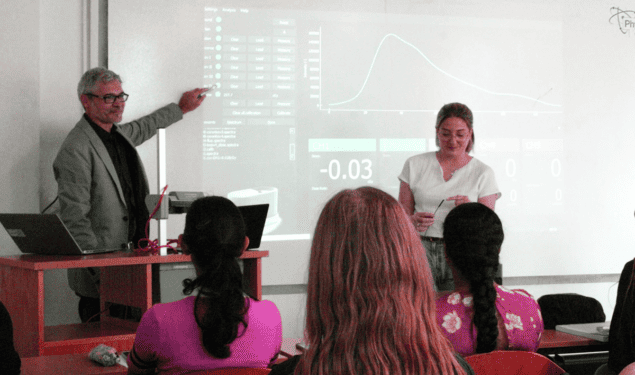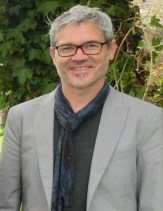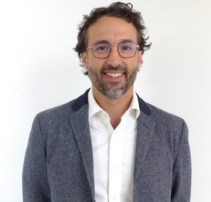Early-career medical physicists in Ireland are getting to grips with a new generation of real-time, small-field dosimetry solutions based on plastic scintillation detectors

Disruptive innovation, customer collaboration, clinical translation: these are the strategic reference points underpinning the product development roadmap at Medscint, a Québec City-based technology company that combines expertise in photonics, scintillation dosimetry and medical physics. The end-game: nothing less than a paradigm shift in radiotherapy dosimetry best practice enabled by a new generation of plastic scintillators that combine near-water-equivalence and real-time response with high spatial resolution and MR-Linac compatibility. Medscint’s optical detectors – known commercially as the HYPERSCINT Research Platform – also offer multipoint capability with a compact footprint (0.5 mm long, 0.5 mm diameter), which makes them ideal for small-field dosimetry and advanced phantom development.
“Our proprietary know-how in optical science and plastic scintillators comes into its own as radiotherapy treatment fields get smaller and geometrically more complex,” claims Jonathan Turcotte, co-founder and chief marketing officer at Medscint. With no need for small-field correction factors to characterize device behaviour, Medscint dosimeters provide a real-time measurement tool that combines high linearity with respect to dose and dose rate. That wide linear dynamic range is relevant at both ends of the treatment spectrum, whether for novel low-dose-rate irradiation schemes or – with bespoke functionality for linac pulse counting and dose-per-pulse measurement – as an adjunct to ultrahigh-dose-rate FLASH radiotherapy applications (which have the potential to drastically reduce collateral damage and toxicity in normal healthy tissue while preserving anti-tumour activity).
Out of the lab, into the clinic
While clinical translation is the commercial priority over the near and medium term, Turcotte and his colleagues have to date positioned the HYPERSCINT Research Platform with a cohort of innovative, cross-disciplinary R&D teams working to realize next-generation radiotherapy systems. “As an early-stage technology company,” he explains, “we have a collaborative relationship with our customers and research partners – a total of 25 groups across North America, Europe and Asia who help to shape our product development and, ultimately, inform the path to at-scale clinical translation.”

A case study in this regard is Mark Foley and his team in the medical physics research cluster at the University of Galway in the west of Ireland. Foley’s broad-scope research interests centre around enhanced radiotherapy schemes, with pioneering work on Monte Carlo modelling and simulation as well as next-generation scintillation dosimetry systems. His research programme dovetails with a busy teaching load, spanning undergraduate courses in biomedical and radiation physics as well as Galway’s MSc in Medical Physics, the first master’s programme in Europe to receive formal accreditation from the North American Commission on Accreditation of Medical Physics Education Programs (CAMPEP).
“We became Medscint’s first European customer when we purchased the HYPERSCINT Research Platform back in summer 2021,” explains Foley. The system has since been put through its paces in a series of five pilot projects involving MSc and PhD students within the Galway medical physics cluster – though the related research activity is set to scale sooner than later. “We have set up a dedicated research stream to evaluate and benchmark Medscint’s plastic scintillation detectors,” says Foley. “This R&D effort sits alongside an established work programme where we’re developing a new class of inorganic scintillation detectors for advanced dosimetry applications.”
After his medical physics students are up to speed with the HYPERSCINT Research Platform, Foley encourages them to pursue further specialist learning and know-how in scintillation dosimetry – chiefly through short-term research placements at partner laboratories within Galway’s international network. “We’re setting our MSc and PhD students up with the skills and technical domain knowledge they need to hit the ground running,” explains Foley. “We want to make sure there’s no prohibitively steep learning curve when they begin their research projects.”
One established collaboration in this regard is with Magdalena Bazalova-Carter’s XCITE Lab at the University of Victoria in British Columbia, Canada. The XCITE team is an early-adopter of Medscint’s real-time, small-field dosimetry solution for research studies on FLASH irradiation schemes in very-small-animal experiments – exposing fruit fly larvae, for example, to ultrahigh dose rates and tracking comparative survival versus conventional irradiation schemes. The lab is also evaluating the FLASH effect on healthy tissue in mice.
Such collaborations, it seems, represent a win-win. A case in point is Kevin Byrne, a former MSc student in Foley’s group who, following a research placement at XCITE, is now working as a research medical physicist within the division of translational radiation sciences at the University of Maryland School of Medicine (Baltimore, MD). Under the supervision of Kai Jiang, assistant professor of radiation oncology, Byrne continues to work on plastic and inorganic scintillation detectors within a wider research programme investigating the FLASH effects of ultrahigh-dose-rate electron and proton beams on preclinical models. “There’s something of a ‘virtuous circle’ in play here,” explains Foley, “with Kevin progressing to supervise other visiting MSc and PhD students from Galway with their projects in scintillation dosimetry.”
Creative education
Notwithstanding Galway’s exploitation of Medscint technology in a medical physics research context, Foley is also putting the HYPERSCINT Research Platform front-and-centre within his undergraduate teaching. “The task is to create a more dynamic research-led learning environment by exploiting portable demonstration devices like the Medscint system,” he explains. “In this way, we’re using Medscint’s plastic scintillation detectors to introduce the fundamentals of radiation dosimetry to first-year students, while reinforcing those concepts with a structured learning path all the way through the syllabus to fourth-year undergraduate level and master’s studies.”
At the same time, argues Foley, the status of Galway’s MSc in Medical Physics is further enhanced by CAMPEP accreditation, which means master’s students graduate with “inherent transferability and mobility” as part of the academic package. “You’ll find our MSc students entering research and clinical physics roles at leading radiation oncology centres in the UK and Ireland as well as North America, Australia and New Zealand,” he concludes. “Another big plus of CAMPEP compliance is that it eases the path when we’re establishing new collaborations with other CAMPEP-accredited research programmes in the US and Canada.”
Disruptive innovation, clinical translation

Medscint aims to “rewrite the rulebook on small-field dosimetry” based on its proprietary optical know-how in the field of plastic scintillation detectors. That’s the claim of Jonathan Turcotte, the vendor’s co-founder and chief marketing officer, whose focus, along with that of his colleagues, is shifting inexorably to the fine detail of clinical translation and the QA requirements of clinical end-users for next-generation radiotherapy modalities.
“We’ve built up the business so far by gaining traction with a cohort of innovative, research-led medical physics programmes – all of them working to define tomorrow’s best practice in radiotherapy dosimetry,” he explains. “The next step in Medscint’s evolution will be more of a twin-track strategy – continuing to target the leading-edge research customers while pivoting in the near term to the clinical QA market.”
Later this year, for example, Turcotte and his team expect to secure 510(k) regulatory approval from the US Food and Drug Administration (FDA) for a clinical system that’s being lined up for small-field dosimetry applications in machine QA. The subsequent CE mark is slated for 2024 as a precursor to installations with clinical customers in the European Economic Area (EEA).
“While plastic scintillators represent a disruptive technology in radiotherapy QA and dosimetry,” notes Turcotte, “it’s significant that roughly one in six clinical physics programmes with CAMPEP accreditation are already working with our products in a research setting.”
Further reading
- SEO Powered Content & PR Distribution. Get Amplified Today.
- PlatoData.Network Vertical Generative Ai. Empower Yourself. Access Here.
- PlatoAiStream. Web3 Intelligence. Knowledge Amplified. Access Here.
- PlatoESG. Carbon, CleanTech, Energy, Environment, Solar, Waste Management. Access Here.
- PlatoHealth. Biotech and Clinical Trials Intelligence. Access Here.
- BlockOffsets. Modernizing Environmental Offset Ownership. Access Here.
- Source: https://physicsworld.com/a/plastic-scintillation-detectors-prove-a-win-win-in-clinical-physics-research-and-education/
- :has
- :is
- :where
- $UP
- 202
- 2021
- 2024
- 25
- a
- academic
- accreditation
- across
- activity
- adjunct
- administration
- advanced
- aims
- All
- along
- alongside
- already
- also
- america
- American
- an
- and
- applications
- approval
- ARE
- AREA
- Argues
- around
- AS
- asia
- Assistant
- At
- Australia
- back
- baltimore
- based
- BE
- became
- been
- begin
- being
- Benchmark
- bespoke
- BEST
- Big
- biomedical
- both
- British
- British Columbia
- built
- business
- busy
- by
- Canada
- capability
- case
- case study
- centre
- centres
- characterize
- chief
- claim
- claims
- class
- click
- Clinical
- Cluster
- Co-founder
- Cohort
- collaboration
- collaborations
- collaborative
- Collateral
- colleagues
- COLUMBIA
- combine
- combines
- comes
- commercial
- commercially
- compact
- company
- compatibility
- complex
- compliance
- concepts
- context
- continues
- continuing
- conventional
- counting
- courses
- create
- curve
- customer
- Customers
- Date
- dedicated
- define
- detail
- developing
- Development
- device
- Devices
- disruptive
- Division
- domain
- drastically
- drug
- dynamic
- early stage
- Eases
- Economic
- Education
- effect
- effects
- effort
- enabled
- encourages
- ends
- enhanced
- entering
- Environment
- established
- establishing
- Europe
- European
- evaluate
- evaluating
- evolution
- example
- expect
- experiments
- expertise
- Explains
- exploitation
- exploiting
- factors
- far
- fda
- field
- Fields
- Find
- fine
- First
- five
- Flash
- Focus
- following
- food
- Footprint
- For
- formal
- Former
- from
- functionality
- Fundamentals
- further
- gaining
- generation
- get
- getting
- graduate
- Ground
- Group
- Group’s
- Have
- he
- healthy
- help
- here
- High
- his
- Hit
- HTML
- http
- HTTPS
- ideal
- image
- in
- inform
- information
- Innovation
- innovative
- interests
- International
- into
- introduce
- investigating
- involving
- ireland
- issue
- IT
- ITS
- jonathan
- jpg
- knowledge
- known
- lab
- laboratories
- later
- leading
- learning
- less
- Level
- like
- lined
- load
- Long
- machine
- make
- MAKES
- mark
- Market
- Marketing
- Maryland
- master’s
- max-width
- means
- measurement
- medical
- Medical physics
- medium
- modelling
- Modelling and simulation
- models
- more
- Near
- Need
- network
- New
- New Zealand
- next
- next-generation
- no
- normal
- North
- north america
- Notes
- nothing
- novel
- now
- of
- offer
- Officer
- on
- ONE
- open
- or
- Other
- our
- over
- own
- package
- paradigm
- part
- partner
- partners
- path
- phantom
- phd
- Physics
- Physics World
- pilot
- Pilot projects
- Pioneering
- placement
- placements
- plastic
- platform
- plato
- Plato Data Intelligence
- PlatoData
- Play
- plus
- Point
- points
- portable
- positioned
- postgraduate
- potential
- practice
- precursor
- preserving
- priority
- Product
- product development
- Products
- Professor
- programme
- programmes
- progressing
- projects
- proprietary
- Prove
- provide
- pulse
- purchased
- put
- Putting
- Q&A
- R&D
- Radiotherapy
- range
- Rate
- Rates
- real-time
- realize
- receive
- reduce
- regard
- regulatory
- regulatory approval
- related
- relationship
- relevant
- represent
- Requirements
- research
- Resolution
- respect
- response
- roadmap
- roles
- roughly
- running
- same
- says
- Scale
- schemes
- School
- Science
- SCIENCES
- secure
- seems
- Series
- set
- setting
- Shape
- shift
- SHIFTING
- short-term
- significant
- simulation
- since
- sits
- SIX
- skills
- smaller
- So
- so Far
- solution
- Solutions
- something
- spanning
- Spatial
- specialist
- Spectrum
- speed
- Sponsored
- Status
- Step
- Strategic
- Strategy
- stream
- structured
- Student
- Students
- studies
- Study
- subsequent
- summer
- supervision
- sure
- survival
- system
- Systems
- Target
- Task
- Teaching
- team
- teams
- Technical
- Technology
- term
- than
- that
- The
- the UK
- The West
- their
- Them
- These
- they
- this
- this year
- those
- though?
- Through
- thumbnail
- time
- Title
- to
- tool
- Total
- Tracking
- traction
- Translation
- treatment
- Uk
- Ultimately
- under
- underpinning
- university
- us
- US Food
- using
- Versus
- Victoria
- want
- Way..
- we
- WELL
- West
- when
- whether
- which
- while
- WHO
- whose
- wide
- wider
- will
- Win-Win
- with
- within
- Work
- working
- world
- year
- Zealand
- zephyrnet













